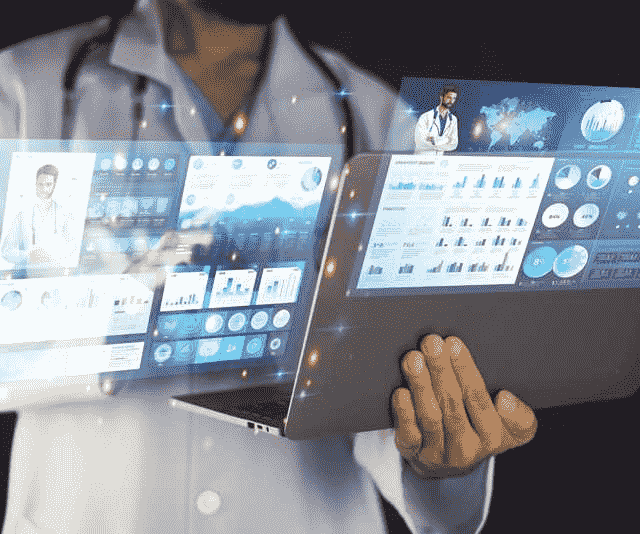In today’s healthcare environment, where facilities continuously strive to improve service and patient care, the need for seamless management solutions is critical. As these facilities grow, they face challenges like handling more patients and maintaining high-quality service. Patient management software, especially solutions like “Healthcare Diary,” is essential in managing these challenges, helping facilities expand while maintaining or even improving care quality.
The Core Challenges of Expanding Healthcare Facilities
Expanding healthcare facilities face significant challenges, including managing increased patient volumes and integrating diverse health systems. These issues require robust solutions to ensure consistent quality of care and efficient operations as they grow.
Managing Increased Patient Volume
As healthcare facilities expand, they inevitably experience an increase in patient volume, which introduces significant challenges in maintaining operational and service quality. Moreover, this rise in patient numbers requires not only more robust data handling capabilities but also more sophisticated scheduling systems to manage appointments effectively.
Additionally, patient tracking becomes crucial to ensure that each patient receives timely and appropriate care. Advanced patient management software like “Healthcare Diary” plays a critical role here by enabling seamless integration of these functions.
Such systems ensure that all patient data is up-to-date and easily accessible to healthcare providers, which is essential for handling larger patient loads efficiently and reducing waiting times.
Integrating Diverse Health Systems
Healthcare expansion often entails the merging or integration of various health systems that may have previously operated independently, each using different platforms or adhering to different standards.
Moreover, this diversity can create significant challenges in data consolidation and system compatibility, posing a substantial hurdle in maintaining a seamless operational flow.
Effective patient management software helps bridge this gap by offering tools that enable easy integration of disparate systems. This integration ensures that patient data flows smoothly between departments and facilities, enhancing communication and enabling a unified approach to patient care.
Ensuring Consistent Quality of Care
With the expansion of healthcare facilities, maintaining a consistent quality of care across all branches and services becomes increasingly challenging. As facilities grow, they must ensure that the standards of care are uniform, regardless of the location or the specific healthcare providers involved.
Furthermore, this consistency is crucial for patient safety and satisfaction. Patient management software supports this goal by providing frameworks and protocols that standardize care delivery. These systems can monitor performance and gather feedback across various touchpoints, allowing management to address any discrepancies in care quality promptly.
Regulatory Compliance and Data Security
As healthcare facilities expand, they must navigate a complex web of new and existing regulations, where data security is a paramount concern. Compliance with health regulations such as HIPAA in the U.S., GDPR in Europe, or other local laws is crucial to protect patient information and prevent legal ramifications.
Patient management software is designed with these needs in mind, incorporating features that support compliance and enhance data security. Furthermore, these systems provide secure access controls, data encryption, and audit trails, which help facilities meet stringent regulatory requirements while safeguarding patient information from unauthorized access or breaches.
Resource Management
Efficient management of both human and material resources is crucial for expanded healthcare operations to control costs and maintain service excellence. As facilities grow, the complexity of resource allocation increases, requiring more sophisticated management tools to ensure that resources are used optimally.
Patient management software like “Healthcare Diary” offers solutions for resource scheduling, inventory management, and workforce allocation. Moreover, these tools help healthcare facilities minimize waste, avoid staff burnout by evenly distributing workloads, and ensure that resources such as medical supplies and equipment are available where and when they are needed most.
The Role of Patient Management Software in Addressing These Challenges
Patient management software plays a crucial role in overcoming the operational challenges faced by expanding healthcare facilities. Moreover, it enhances data management, improves communication, and streamlines administrative processes, ensuring high-quality, efficient patient care even as demands grow.
- Streamlined Patient Data Management: Patient management software like “Healthcare Diary” offers robust data management capabilities, ensuring that patient records are easily accessible but securely stored. This improves data integrity and reduces errors, contributing to better patient outcomes.
- Enhanced Coordination and Communication: These systems facilitate better communication and coordination among different departments, essential in a large-scale healthcare setup. This leads to more synchronized care delivery and operational efficiency.
- Automated Scheduling and Resource Allocation: Automating these aspects allows for optimal resource utilization and reduces the likelihood of overbooking or resource shortages, ensuring that patient care does not suffer due to administrative oversights.
- Compliance and Security Built-In: With built-in compliance checks and advanced security protocols, patient management software helps facilities meet regulatory requirements effortlessly while protecting sensitive patient data.
- Scalability and Flexibility: As facilities expand, the software can scale to accommodate new additions without the need for significant overhauls, making expansion smoother and less disruptive.
The Tangible Benefits of Implementing Patient Management Software
- Improved Patient Satisfaction: Efficient management systems reduce wait times, improve communication with healthcare providers, and enhance the overall patient experience.
- Increased Operational Efficiency: By automating routine tasks, the software allows healthcare professionals to focus more on patient care rather than administrative duties.
- Better Financial Performance: Efficient resource management and reduced administrative costs lead to better financial health for the facility.
- Data-Driven Decisions: The software provides analytics and reporting tools that help in making informed decisions, which are crucial for the strategic growth and continuous improvement of the facility.
Conclusion
As healthcare facilities continue to grow and face new operational complexities, the role of comprehensive solutions like “Healthcare Diary” becomes increasingly essential.
By adopting “Healthcare Diary,” facilities can not only streamline their operations but also enhance patient satisfaction and maintain high standards of care. To learn more about how “Healthcare Diary” can help your facility succeed, contact us today.
FAQs
Q1. What is patient management software?
Patient management software helps healthcare providers manage patient information, appointments, billing, and other administrative tasks in one centralized system.
Q2. How does patient management software improve patient care?
It improves care by ensuring that all patient information is accessible. It also ensures that reducing waiting times and allowing healthcare providers to make better, informed decisions quickly.
Q3. Is patient management software secure?
Yes, modern patient management software systems are equipped with strong security measures to protect patient data and ensure compliance with healthcare regulations.
Q4. Can patient management software integrate with other systems?
Yes, most patient management software is designed to integrate seamlessly with other healthcare systems, which is vital for maintaining the continuity and accuracy of patient data.
Q5. What should healthcare facilities look for in patient management software?
Facilities should look for software that is scalable, easy to use, compliant with regulations and provides excellent customer support.




